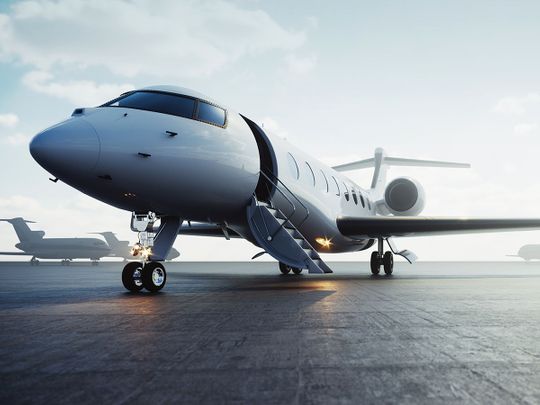The sporting event is expected to attract over 1.2 million fans and given the lack of hotels in Doha, many fans will be staying in the UAE and flying to Doha for the matches. Several regional airlines are rushing to meet this demand.
Air Arabia will operate 14 additional shuttle flights per day between Sharjah and Doha. Etihad Airways will operate 42 weekly flights during the event, compared to 18 weekly flights between Abu Dhabi and Doha currently. Low-cost airline flydubai will do most of the heavy lifting with around 60 daily shuttle flights.
Jetex isn’t the only private jet company gearing up for the event. DC Aviation Al-Futtaim (DCAF) is also increasing its capacity to meet the expected increase in demand. “We are seeing a continued level of travel demand from Dubai to Doha,” said Holger Ostheimer, managing director of DC Aviation Al-Futtaim. “DCAF will make available capacity on different aircraft sizes, small business jets with 4 to 6 seats for a more cost-conscious clientele, as well as in the large business jet category with 12 to 16 seats. “
Ostheimer said charter demand has been strong, with much of the leisure traffic returning.
Typically, for a small group of four to six passengers traveling on a private jet during the World Cup period, the cost can range from $18,000 (around Dh66,000) one-way depending on the aircraft type and size.
Normal commercial flights from Dubai to Doha will cost passengers between Dh1,000 and Dh4,000 during this period. A seat in Business Class can cost up to 12,000 Dh.
Traveling on a business jet will be both attractive from a fare point of view and will allow passengers to travel when they need to.
– Holger Ostheimer of DC Aviation Al-Futtaim
While fuel prices affect commercial airline margins, the impact on business aviation is minimal. Jetex’s Mardini pointed out that commercial planes require significantly more fuel than business jets. The Bombardier Global 5000, one of the largest private jets, has an average hourly fuel consumption of 450 gallons per hour. An Airbus A380 – the largest commercial airliner – can burn up to 3,600 gallons in an hour.
“Commercial aircraft also need to occupy 60-70% of seats in order to break even, while in private aviation it all depends on demand,” he added.
DC Aviation said fuel costs will be adjusted in flight pricing and added the increase will be “minimal”.
The CEO of Jetex does not expect commercial aviation to return to pre-pandemic levels until at least 2025 or 2026. This is mainly due to staffing issues faced by airlines in the UK and in Europe.
“It’s a big plus for our industry because people should still be flying in a private jet to avoid last-minute cancellations, delays and lost baggage,” Mardini said. “Airlines also continue to be impacted by the pandemic and high fuel prices.”

